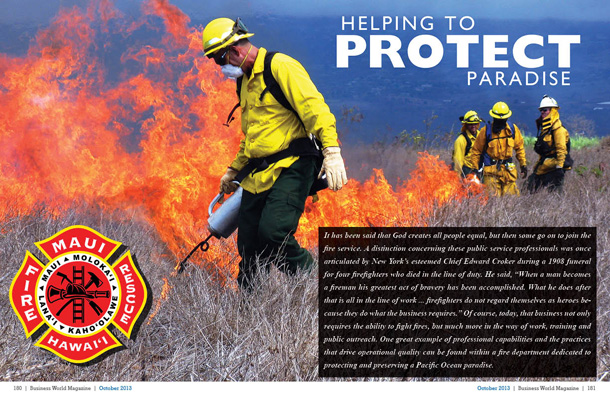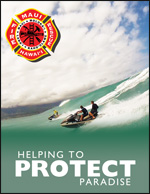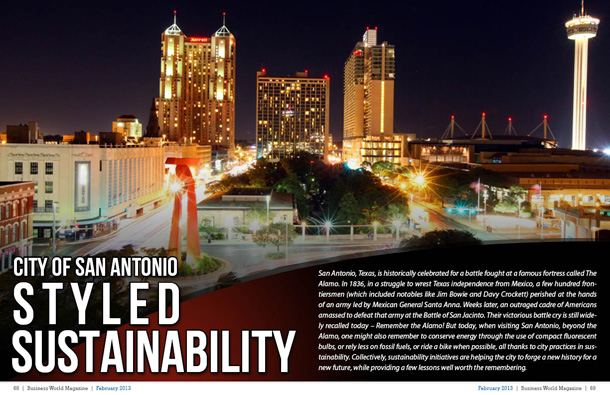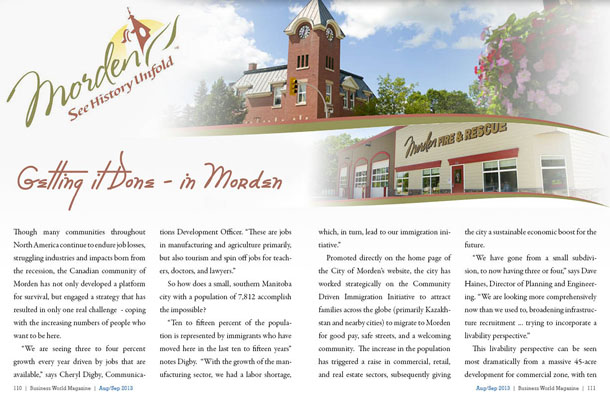
Helping to Protect Paradise

It has been said that God creates all people equal, but then some go on to join the fire service. A distinction concerning these public service professionals was once articulated by New York’s esteemed Chief Edward Croker during a 1908 funeral for four firefighters who died in the line of duty. He said, “When a man becomes a fireman his greatest act of bravery has been accomplished. What he does after that is all in the line of work … firefighters do not regard themselves as heroes because they do what the business requires.†Of course, today, that business not only requires the ability to fight fires, but much more in the way of work, training and public outreach. One great example of professional capabilities and the practices that drive operational quality can be found within a fire department dedicated to protecting and preserving a Pacific Ocean paradise.
The Island of Maui is the second largest of all comprising the Hawaiian Islands and its name derives from the same given to a fabled figure who, as legend holds, was bestowed with a magical hook that he used to move the heavens and shift the seas to raise-up the land that is now known as Maui. And it is here that the Maui Fire Department has ultimately raised the bar in terms of overcoming challenges confronted by fire service professionals. In addition to fighting structural fires and brush fires, department units are tasked in the investigation of fires, the enforcement of safety regulations and the conducting of public education campaigns designed to prevent fires. Staff is also trained to effectively respond to Hazmat or search & rescue situations, by sea, by air and by land. “Logistically, it is a nightmare, but we get it done,†says Maui County Fire Department Chief Jeffrey Murray, who acknowledges, “Our particular situation is unique.â€
To explain that unique situation, the MCFD is comprised by more than 300 personnel deployed among 14 stations. Ten stations are engaged in protecting the 728 square-miles which encompasses Maui while three other stations are deployed on the 216 square-miles that make-up the island of Molokai. One station serves the 164 square-miles comprising the island of Lanai, and additional rescues resources are provided to the island of Kahoolawe, a largely uninhabited site formerly used in bombing tests conducted by the U.S. Navy. Collectively, these islands are made home by a population of only some 150,000 residents, but annually, they attract more than two million visitors. Over the course of any day, beyond responding to a fire event at a local hotel or private home, the MCFD could just as easily be deployed to a rescue operation among the cliffs of Mt. Haleakala whose peak reaches an elevation of 10,000 feet, or a rescue among churning ocean waves that elevate upwards of more than 20 feet. Recovery of victims killed following the breaching of a dam, rescue of tourists bitten by sharks or in a boating mishap, and mitigating the impact from a series of arsons intent to destroy fields of sugar cane so vital to the community’s agricultural economy – these are just a few of the recent situations in which MCFD personnel have diligently responded to the call of duty, and no two days are ever the same.
Ahead of the Curve
As a relatively small department, MCFD are trained to effectively confront the range of situations that they may encounter in service to their community. One of the tools used to assist in training is known as the Blue Card Command Program which is complemented by 50 hours of online courses derived from the curriculum known as Fire Command. Upon completing the course, personnel can elect to go through further evaluation and testing through a three day series of incident simulations staged at any one of the Command Training Centers located among the United States. The travel costs associated with training can be challenging to a small department, but MCFD has overcome this by utilizing Blue Card’s “CTC in a Box,†a modality that allows personnel to participate in simulations online after being equipped with specially programmed laptop devices, essentially, the training travel to personnel as opposed to them traveling to training.
Chief Murray says the MCFD constantly strives to stay ahead of the curve, not only in training, but in finding means to reduce operational costs without compromising service to the community. This has proven to be a difficult balancing act in recent years as budget cuts born from the recession have impacted the department just as it has impacted departments throughout the world. Though budgets have been reduced, demand for services has not. Fortunately, Chief Murray says the department has been able to endure the brunt of the impact by advancing in protocols which will ultimately help MCFD achieve accreditation as recognized by the Centers for Public Safety Excellence. Though there are thousands of fire departments throughout the world, only some 150 have achieved accreditation. Chief Murray says that as a quality assurance system that drives best practices, going through the accreditation process has empowered the MCFD to identify liabilities, gaps in training and assess needs within its community that help the department better utilize tax dollars at its highest potential. After taking its first steps in accreditation, an election led to changes in the city administration; an event that resulted in some officials disputing the necessity of accreditation, yet Chief Murray say the commission to which he reports feels that accreditation is important and is very supportive. “This helps us ensure that we’re providing the best service possible to our community,†says Chief Murray. “Accreditation also helps us ensure that we’re appropriately serving our personnel by providing them with the training and the tools to fulfill their service as effectively and safely as possible,†says Murray.
While the MCFD continues to advance toward accreditation, the future will see the department increase its presence on area beaches by taking on lifeguard duties. It also continues to conduct public outreach through fire safety programs, code enforcement initiatives and community events which include award programs that honor those who have heroically performed to help others in emergency situations. Chief Murray says staff takes great pride in their work, but also for having an opportunity to serve their community and make a beneficial difference in the lives of others.
As Chief Murray says, “Some people don’t really think about all that we do to help until they personally require that help … but that’s what we’re here to do and we strive to do it to the best of our ability with the resources we have.â€
For more information, please visit their website at: Â Maui Fire Department
 Preferred Vendors of Choice:








